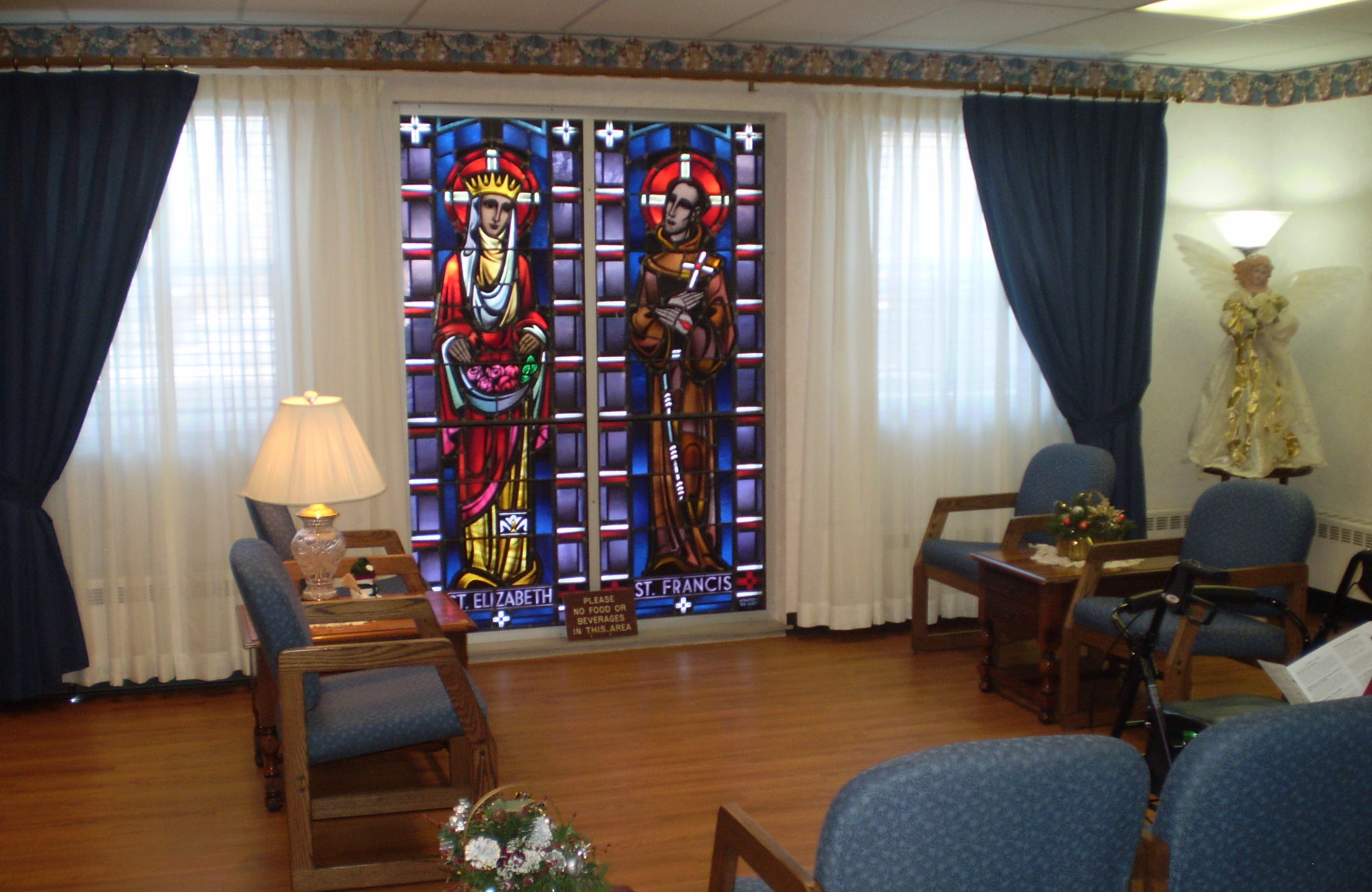
Sunday afternoon, we invited residents to gather for popcorn stringing. With the help of a couple of volunteers and eleven residents, we now have a table full of popcorn ready to decorate a Christmas tree at St. Anne’s. While working, we got to enjoy Christmas music as one of our residents had a CD player and Christy Lane Christmas CD. This added a nice touch to the fun afternoon. Everyone seemed to have a great time. Some had never strung popcorn before.
The Christmas tree was a German tradition which became popular in our country in the 1800s. It was common to put fruit on the trees in Germany. In America, cranberries were in season in November, just on time to be put on Christmas trees in December. In the early days, people even dyed their popcorn to make it into a colorful garland on their trees.
In simpler times with less money available, popcorn was an affordable way of helping make Christmastime more festive.
Not only was popcorn inexpensive and available, it also had cultural roots in the Americas: Aztecs would use it for decoration and ornamenting of dancing apparel for festivities.
In modern times, there have even been records marked regarding strings of popcorn. In 2014, there was a string 1,049 feet and ten inches long made in the United Kingdom with help from over 350 people.
One tip we should have known ahead of time (before we did this project) is that it is easier to string day-old popcorn as it is less apt to break.
In case you’d like to try a fun, inexpensive addition to your Christmas tree this year, let’s describe how we did it:
Cut pieces of sewing thread into 3-foot long strings. Knot each one at an end. You’ll need one string for each participant. Thread the needle on the other end and set to work.
Tips:
- Be careful to avoid the hull/kernel area as it is hard. Hold onto the end of your thread when putting the needle through so the thread does not come off the needle.
- You don’t need to double the thread; this does not work too well. One suggestion is even to use dental floss instead of thread.
Resources:


 Here at St. Anne’s, diabetes is something we are frequently addressing; it comes up in our care conferences and other discussions because a good number of our residents have to deal with this ailment every single day.
Here at St. Anne’s, diabetes is something we are frequently addressing; it comes up in our care conferences and other discussions because a good number of our residents have to deal with this ailment every single day.


 We’re getting ready for our ‘Autumn Extravaganza,” and need your help!
We’re getting ready for our ‘Autumn Extravaganza,” and need your help!






















